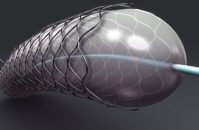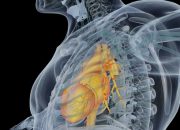Courtesy of Dr. Carlos Fava. Between 40% and 70% of patients undergoing transcatheter aortic valve replacement (TAVR) present coronary lesions. The fact that aortic stenosis affects how blockages act, and that, after stenosis correction, hemodynamic compromise for those same lesions may vary, has been consistently proven. Its management has not been determined yet. The study…
Post PCI High Sensitivity Troponin Elevation: No Prognostic Value
The prognostic value of high sensitivity troponin elevation after elective PCI in patients with or without elevated baseline values remains unclear. The aim of this study was to measure the prognostic value of post elective procedure high sensitivity troponin and to determine whether this may be influenced by baselines TnT values. The study…
Ticagrelor vs. Prasugel: Similar Safety and Efficacy in Primary Angioplasty
No randomized head-to-head study comparing the efficacy and safety of ticagrelor and prasugrel has been carried out in the last 7 years since these newer P2Y12 inhibitors first showed a higher efficacy relative to clopidogrel. This study was designed to compare the efficacy and safety of prasugrel and ticagrelor in patients with acute myocardial infarction…
FUTURE: Mortality Increase in the FFR Arm, Real or Casual?
The FUTURE study, testing the utility of functional revascularization by measuring the fractional flow reserve (FFR), was halted early by its safety committee due to an increased mortality rate at 1 year among patients guided by FFR. In this unexpected unprecedented outcome, 17 patients in the FFR-guided group died at a year of follow-up, compared with 7 patients…
Is Angioplasty at Centers Without Surgical Backup Safe?
Performing coronary angioplasties at hospitals without surgical backup seems to be safe for a wide variety of patients, from those presenting ST-segment elevation myocardial infarction to those undergoing elective procedures. This work responds to a long-running debate over whether centers without on-site surgery capabilities in case of complications can be considered as referral centers…
Non-Cardiac Surgery with Incomplete Revascularization, Associated to Events
This study presented at the American Heart Association Scientific Sessions 2016 and simultaneously published in the Journal of the American College of Cardiology, showed incomplete revascularization is associated with an increased risk of adverse cardiac events, particularly infarction, in patients that must later receive non-cardiac surgery. Patients with incomplete revascularization (defined as a ≥ 50% left…
Women: More Prone to Lower Coronary Flow Reserve
Compared to men, women have less chances of developing obstructive coronary artery disease (CAD), but this new study suggests they are more prone to have lower coronary flow reserve, which is also a risk factor. Evidently, ischemic cardiomyopathy entails far more than assessing and treating plaque burden in epicardial arteries. In women, the most…
Contemporary Ventricular Assist Devices: Hemodynamic Consequences
Courtesy of Dr. Agustín Vecchia. Despite current technological advancements and improvement in reperfusion rates in a setting of infarction, cardiogenic shock still is a relatively frequent complication with a mortality rate close to 50%. The need to augment cardiac output in these patients and the fact that the popular intraaortic balloon counterpulsation has not been able to…
Bifurcation Lesion in Distal Left Main Coronary Artery: One or Two Stents?
Courtesy of Dr. Carlos Fava. Unprotected left main coronary artery (LMCA) angioplasty has become an important trend in the last few years. One of the most significant unresolved questions about it is whether one stent is better than two in distal lesions, and how is their progress after treatment. This study included 937 patients who…
More Evidence For Left Main PCI
Courtesy of Dr. Carlos Fava. Left main coronary artery disease (LMD), has historically been treated with myocardial revascularization surgery (CABG), but for some years now, and with the development of new drug eluting stents (DES), percutaneous coronary intervention (PCI) has been gathering support in this challenging territory. The study analyzed the SYNTAX and PRECOMBAT…
Left Main Coronary Artery Angioplasty Would Be Non-Inferior to Surgery
Courtesy of Dr. Carlos Fava. Left main coronary artery (LMCA) lesions have always been defined as high-risk, with surgery as treatment of choice. Drug-eluting stents (DES) have slowly changed that, but their use still lacks strong supporting evidence. The Evaluation of XIENCE versus Coronary Artery Bypass Surgery for Effectiveness of Left Main Revascularization (EXCEL) study…









